Leica Cassettes: The Inconvenience of Perfection
Once the choice of fastidious Leica shooters, they’re now collectibles.
In the beginning days of 35mm photography, you could not go to a store and buy a roll of film. Initially, all 35mm still photographers used reloadable metal cassettes that had to be individually loaded with film cut from bulk rolls (and the film end had to be cut with a suitable leader for the take-up spool). By the late 1920s you could buy pre-spooled 12- 18- and 36-exposure lengths of film in foil packets and simply insert them into the cassettes, a convenience that proved to be very popular. It wasn’t until 1934 that Kodak unveiled the now standard pre-loaded, felt-lipped 35mm film cartridge (in conjunction with the release of the first Kodak Retina, the Retina I, model 117).
Leica dealt with the film issue with its usual technical brilliance – a cassette that made things easier, with the implementation of custom cassettes coupled with a twist lock on the camera baseplate that automatically opens the slot on an inserted Leica cassette when you turn it to “closed or zu” position, allowing the film to move freely, with virtually no drag, onto the take-up spool. When you turn the lock to “open or auf,” this closes the slot, making the cassette light tight, so you can remove the baseplate and retrieve the exposed film. The Contax I of 1932 and other early 35mm cameras used their own reloadable cassette systems, all based on similar principles, and often using cassette-to-cassette feed to obviate the need to rewind.
During the prewar era, Leitz Wetzlar brought forth four variations of the reloadable metal Leica cassette for base-loading Barnack (screw mount) Leicas, dubbed type A, B, C, and D, and a final version, the slightly shorter IXMOO in 1954, which works in all M-series Leicas up to the early M6 and is also useable in screw-mount Leicas. The most common example is the type B Leica cassette, also known by its Leitz code name FILCA, which only works in screw mount Leicas. The type B is basically a type A with added orientation grooves to assure proper alignment of its inner and outer components and an improved spool with a turn orientation arrow. The type C cassette is a rare variant of the type B that uses a labyrinthine light trap and has no button on top. The type D cassette, jointly developed by Agfa and Leitz in the early ‘30s, does not open during film transport like the others but has a felt lipped light trap like the one in a standard preloaded 35mm film cartridge. Therefore, Type D’s require that care must be taken to ensure that the felt doesn’t become contaminated with grit and cause film scratches. Rare early versions of the Leica II, Model D of 1932 were briefly supplied with type D magazines but lacked the provision foe opening B type (FILCA) magazines. This was soon remedied by retrofitting a new locking plate that permitted type B cassettes to be opened and closed. It’s also worth noting that from 1940-1946 Leitz, New York marketed its own version of the FILCA cassette, suitably engraved on the base.
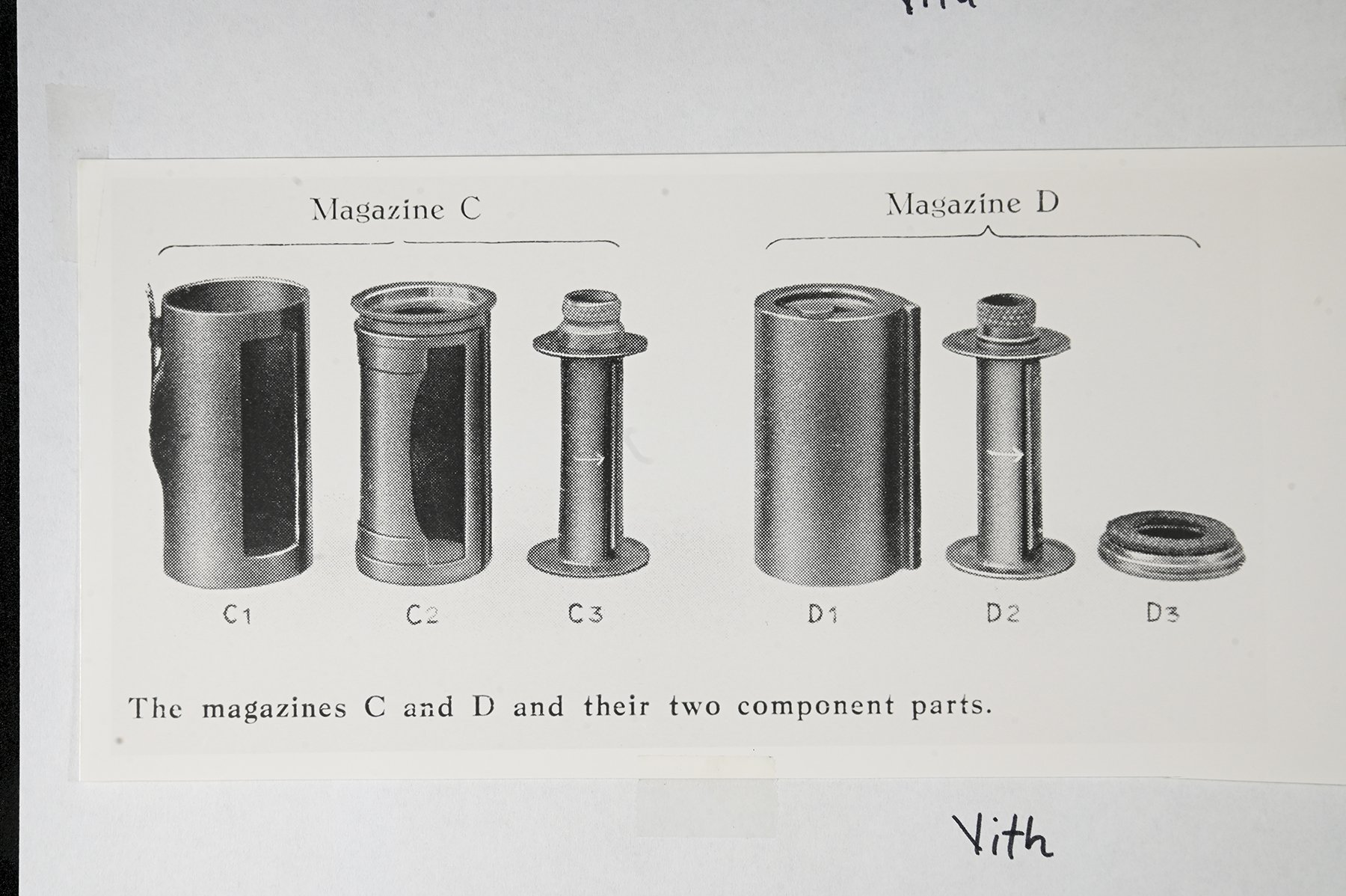
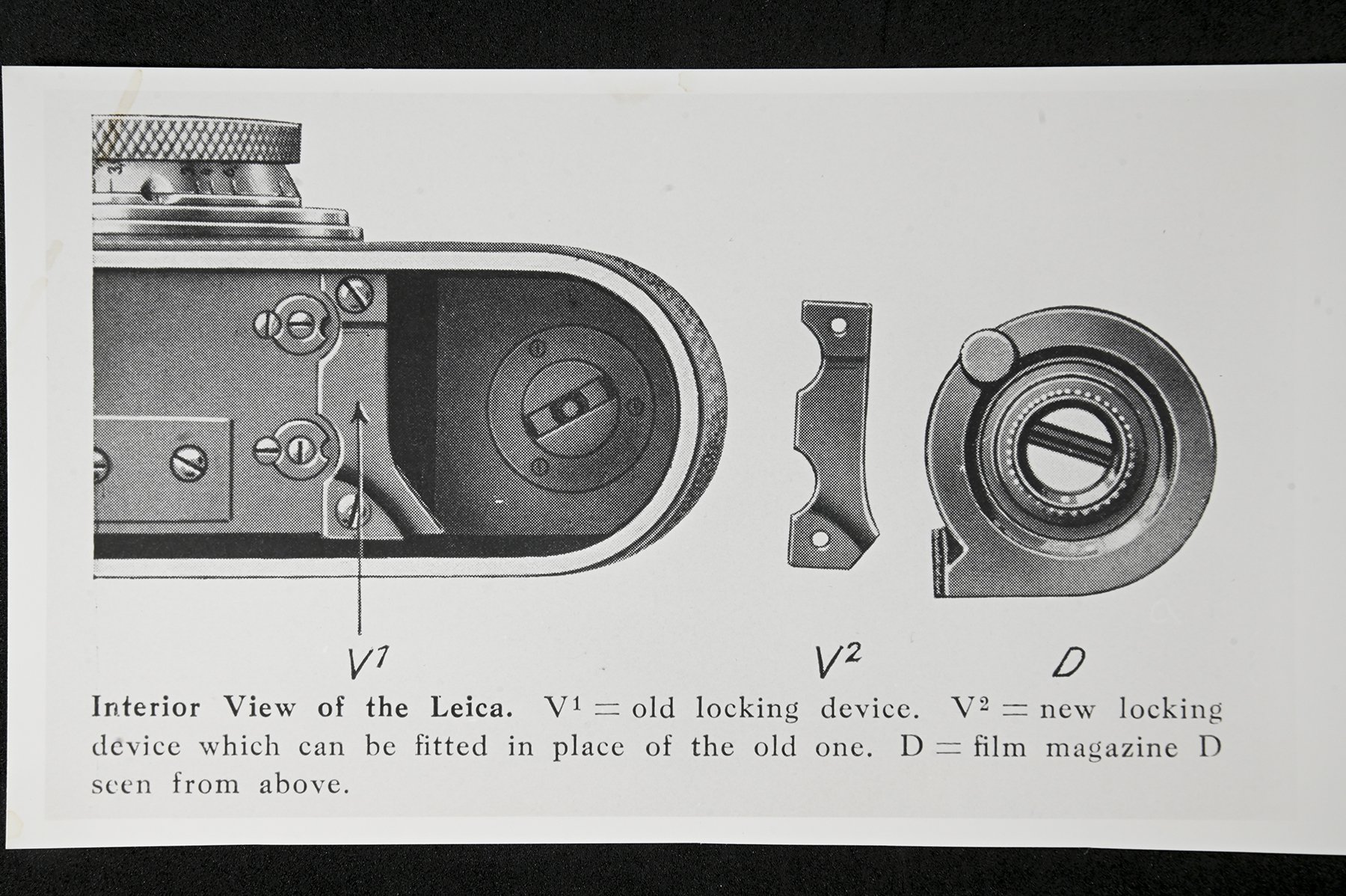
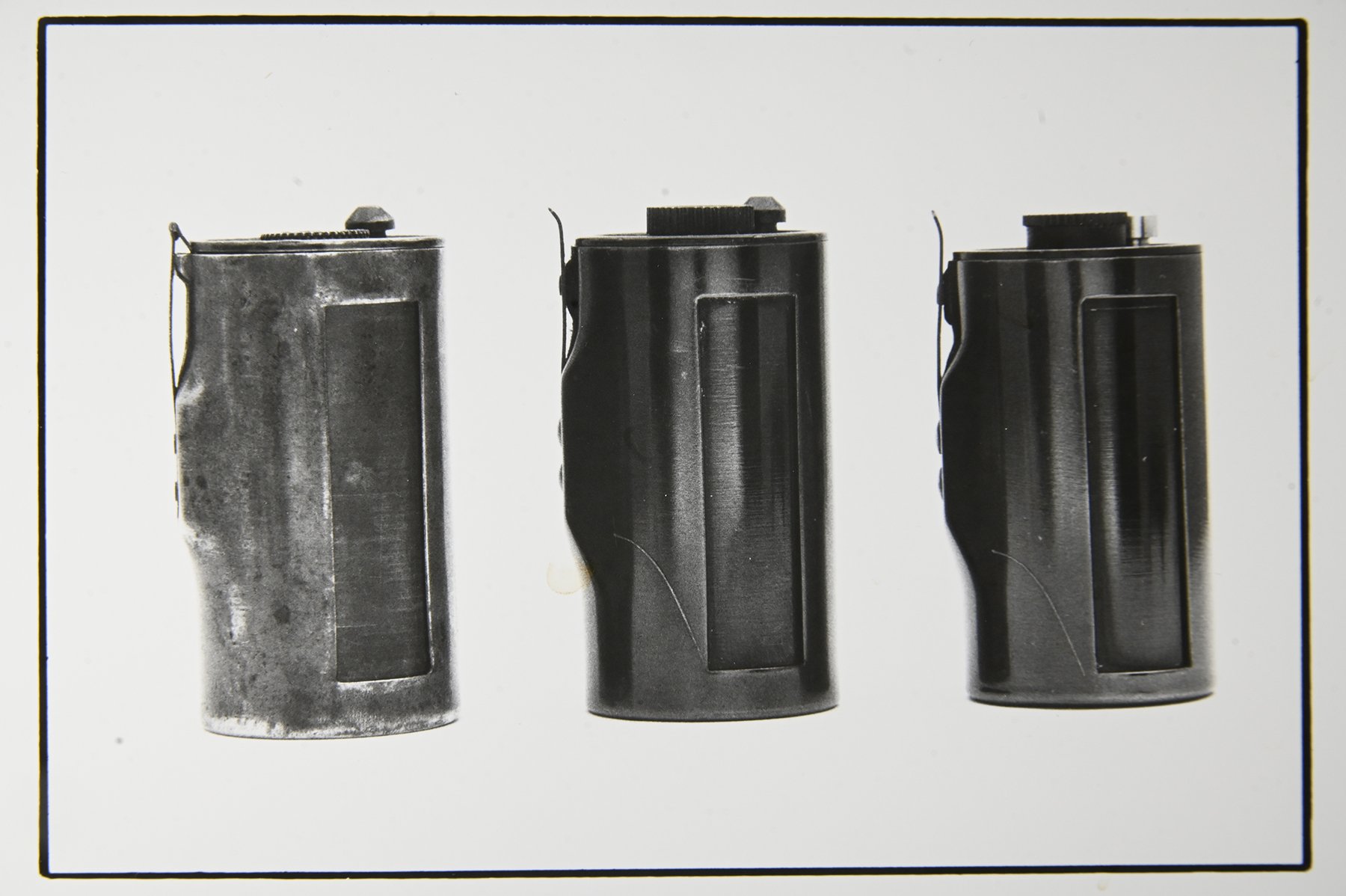
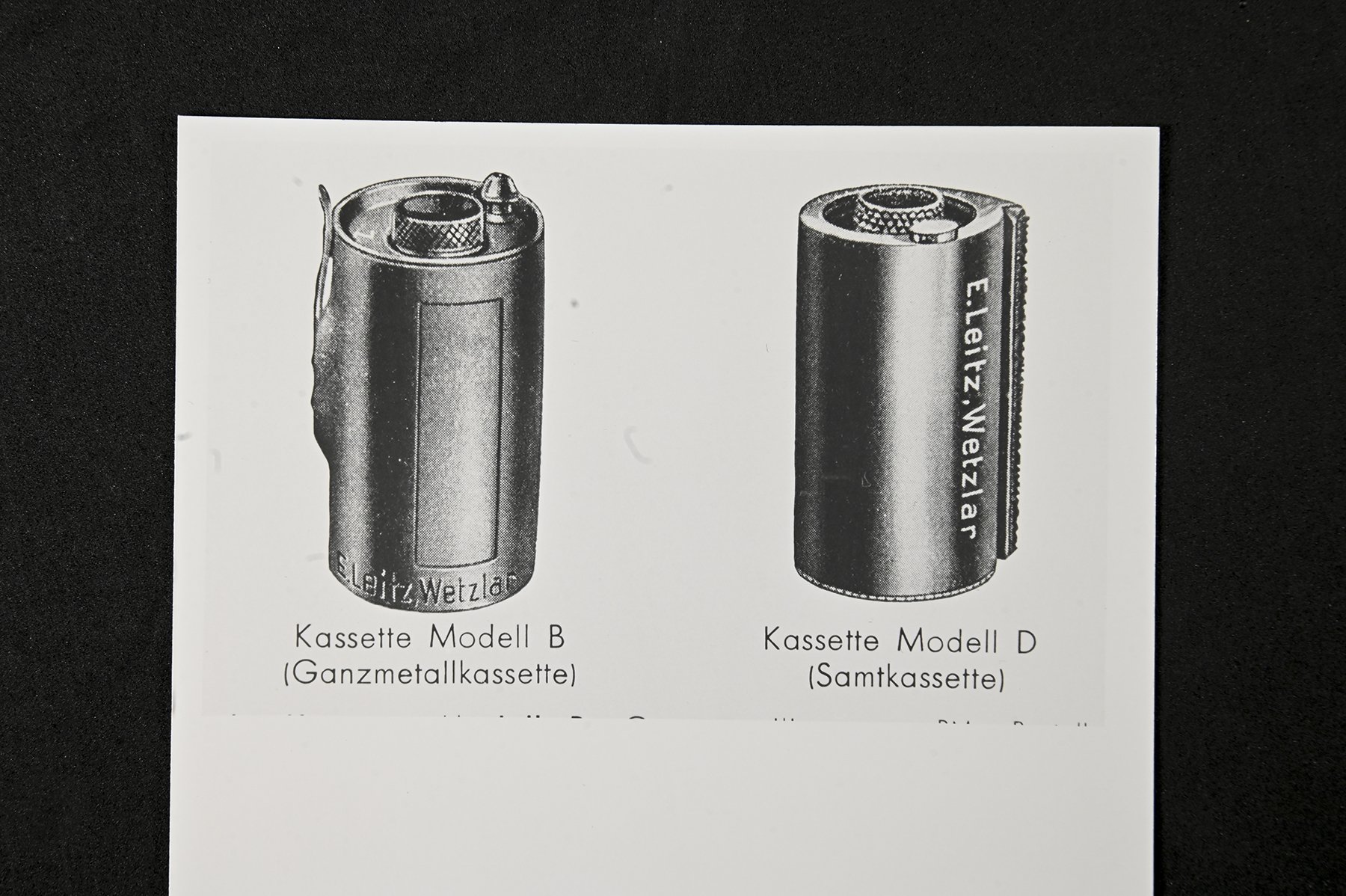
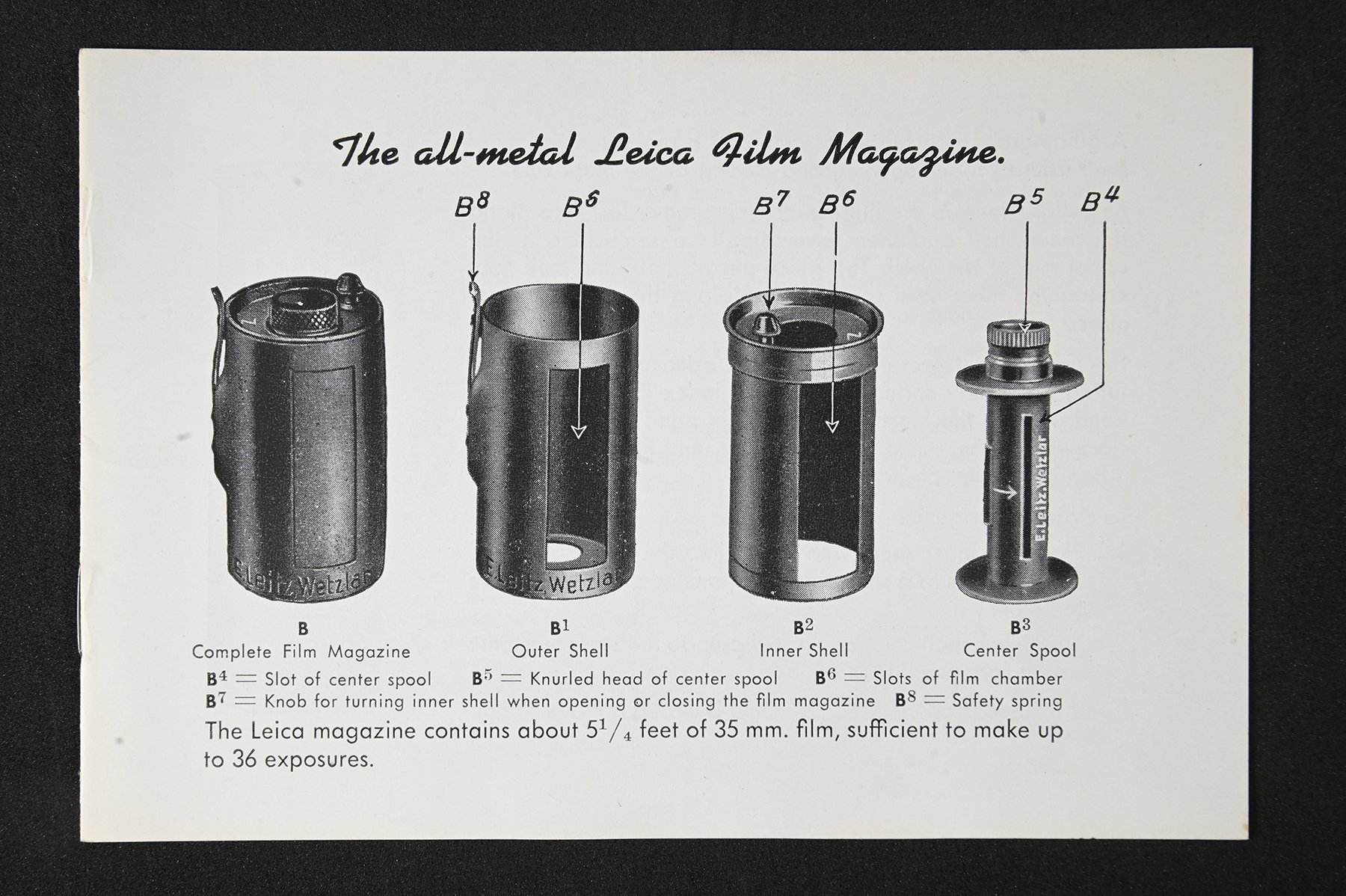

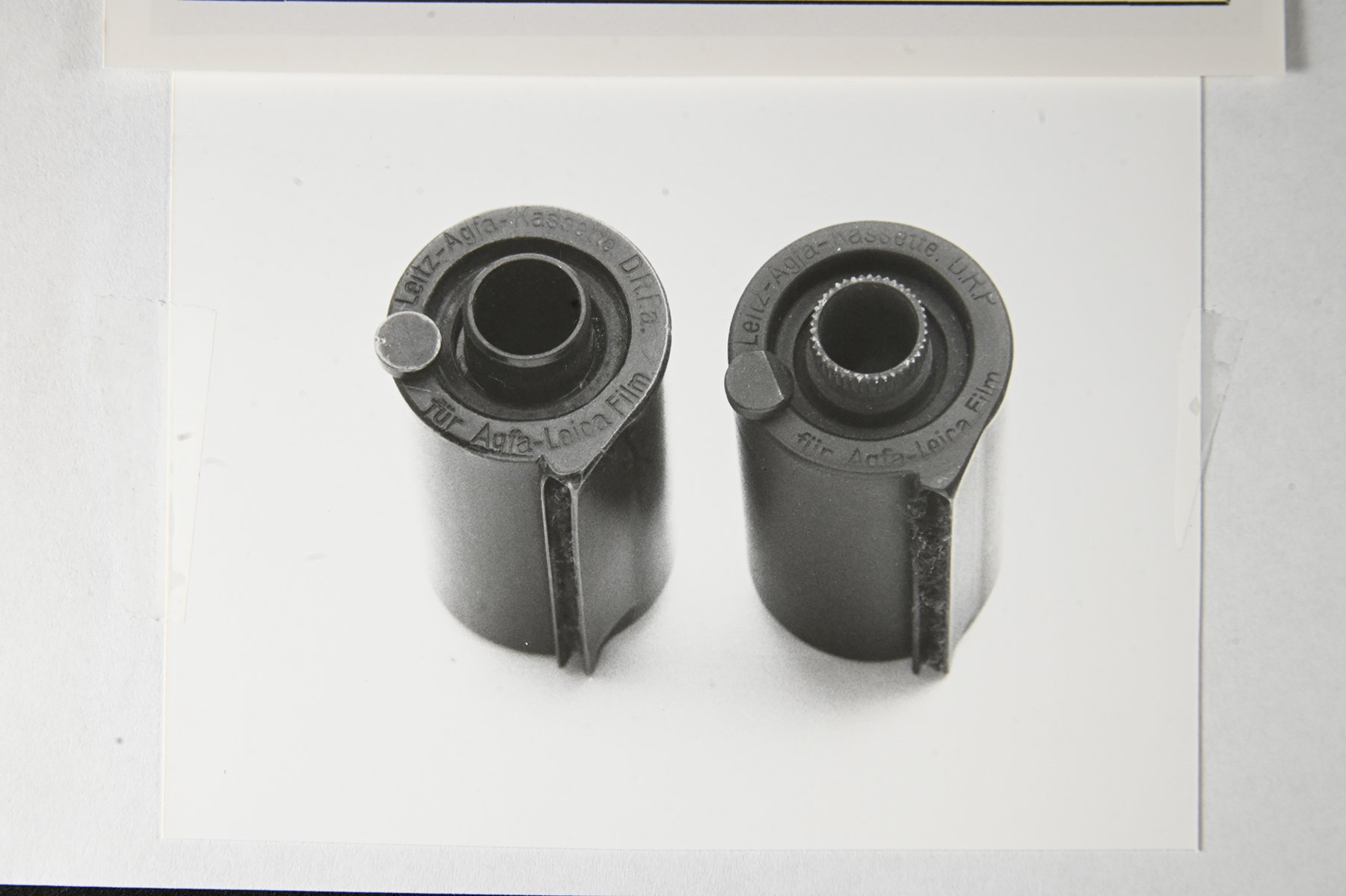
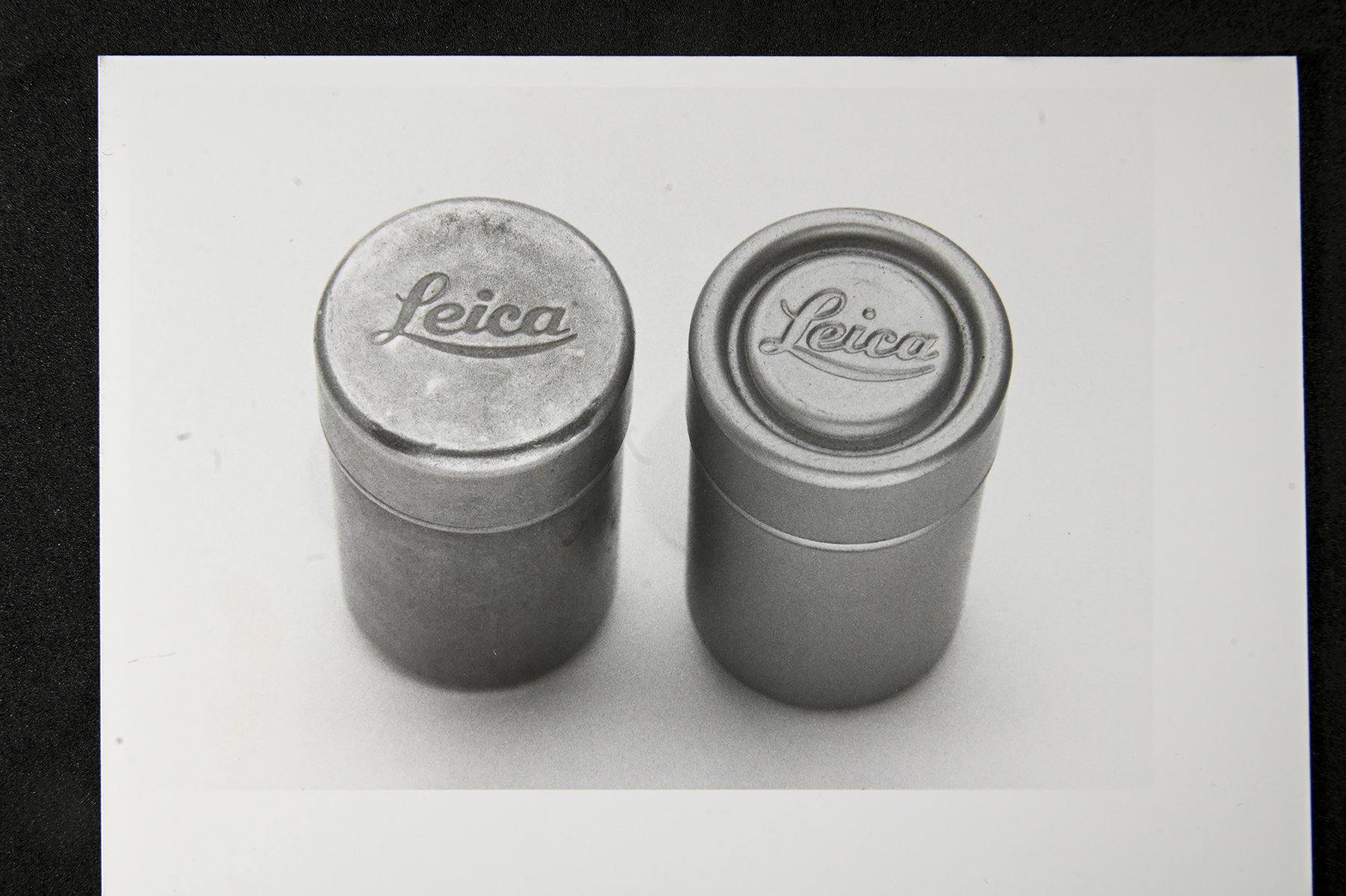
The later developed IXMOO cassette is readily identified by its shorter (by about 2mm) height than earlier Leica cassettes and the fact that it has a shiny chrome plated opening and closing pin on top. Earlier Leica cassettes have black painted pins, but fair warning—if the paint rubs off due to normal use, it can be mistaken for a shiny metal one. There’s also a curved line inscribed on the outer surface of IXMOO cassettes that serves as a guide to cutting a properly tapered film leader. There were also variations in camera take-up spools—later ones have spring-loaded shafts to facilitate removal from the camera. Finally, there were two types of metal cans to hold Leica cassettes. The IXMOO cassette usually used the later version (code name DRXOO) or the subsequent, more modern looking screw top plastic container.
Despite their technical advantages over the ubiquitous preloaded 35mm cartridge—superior light-tightness, reusability, and (except for the Leica D cassette) virtually no drag when transporting the film or possibility of film scratches, Leica cassettes were never very popular in the U.S. They were used far more frequently in Europe, especially in Germany, where they attracted a small but devoted following. That’s undoubtedly why they remained in production for well over 50 years. Leica cassettes haven’t been listed in the Leica catalog for decades, and beginning with the late Leica M6, no 35mm Leica M, including the current M-A and MP, has a baseplate that includes the mechanism for opening and closing IXMOO cassettes. However virtually all analog Leica Ms can be retrofitted with a professionally modified or vintage baseplate that will add that capability, and most Barnack Leica users can simply buy used FILCA cassettes and use them directly if they’re so inclined. Used Leica cassettes of all types are readily available on the leading online auction sites or from Leica dealers specializing in collectibles. Prices vary widely—from $10-15 to the low hundreds depending on type, condition, and number, so caveat emptor. It takes a very special person to get into the arcane pursuit of using Leica cassettes, but if you want to partake in the vintage Leica experience, go for it!
A tip of the lens cap to the great James Lager for providing all the illustrations used in thus article.
